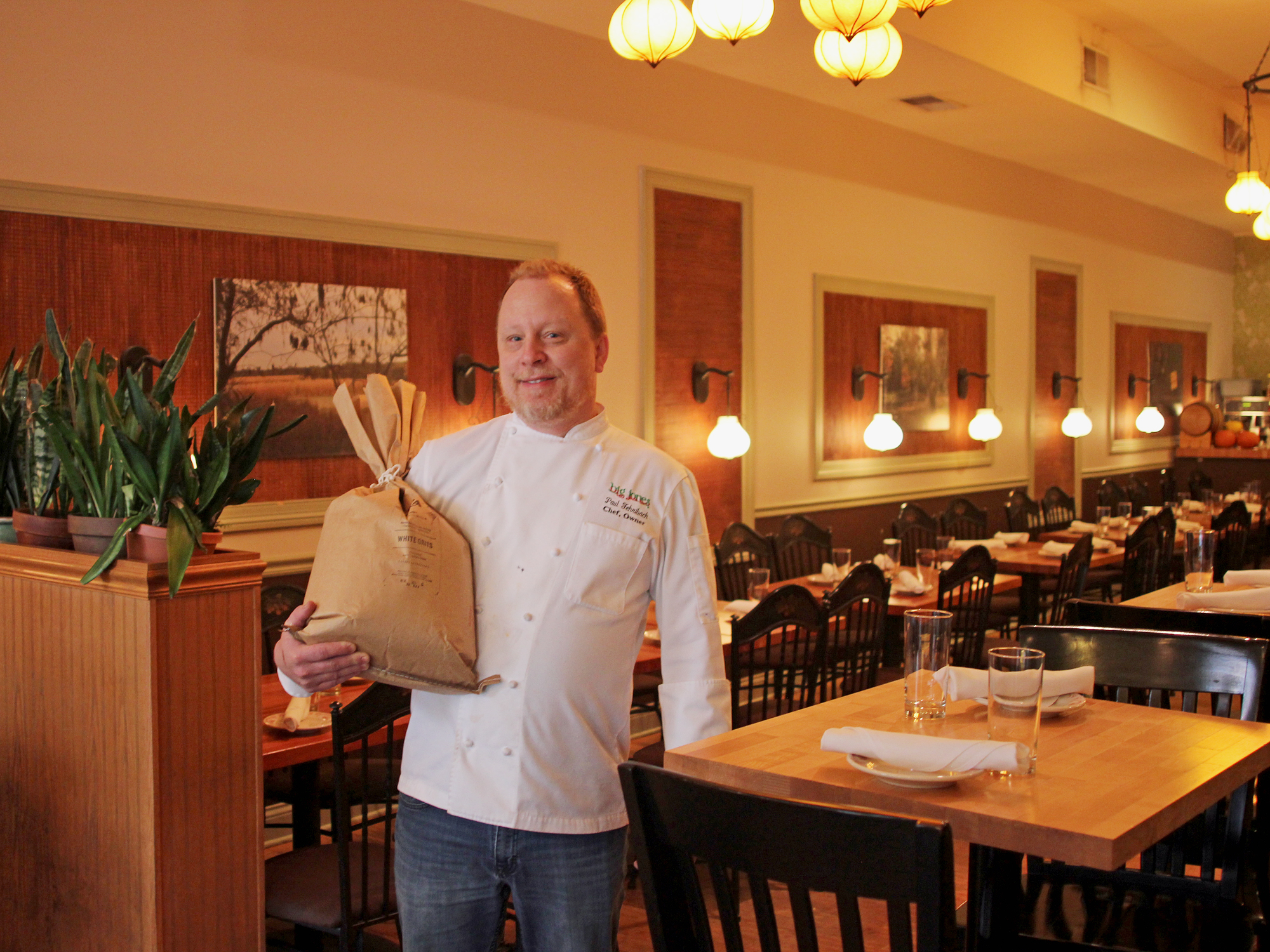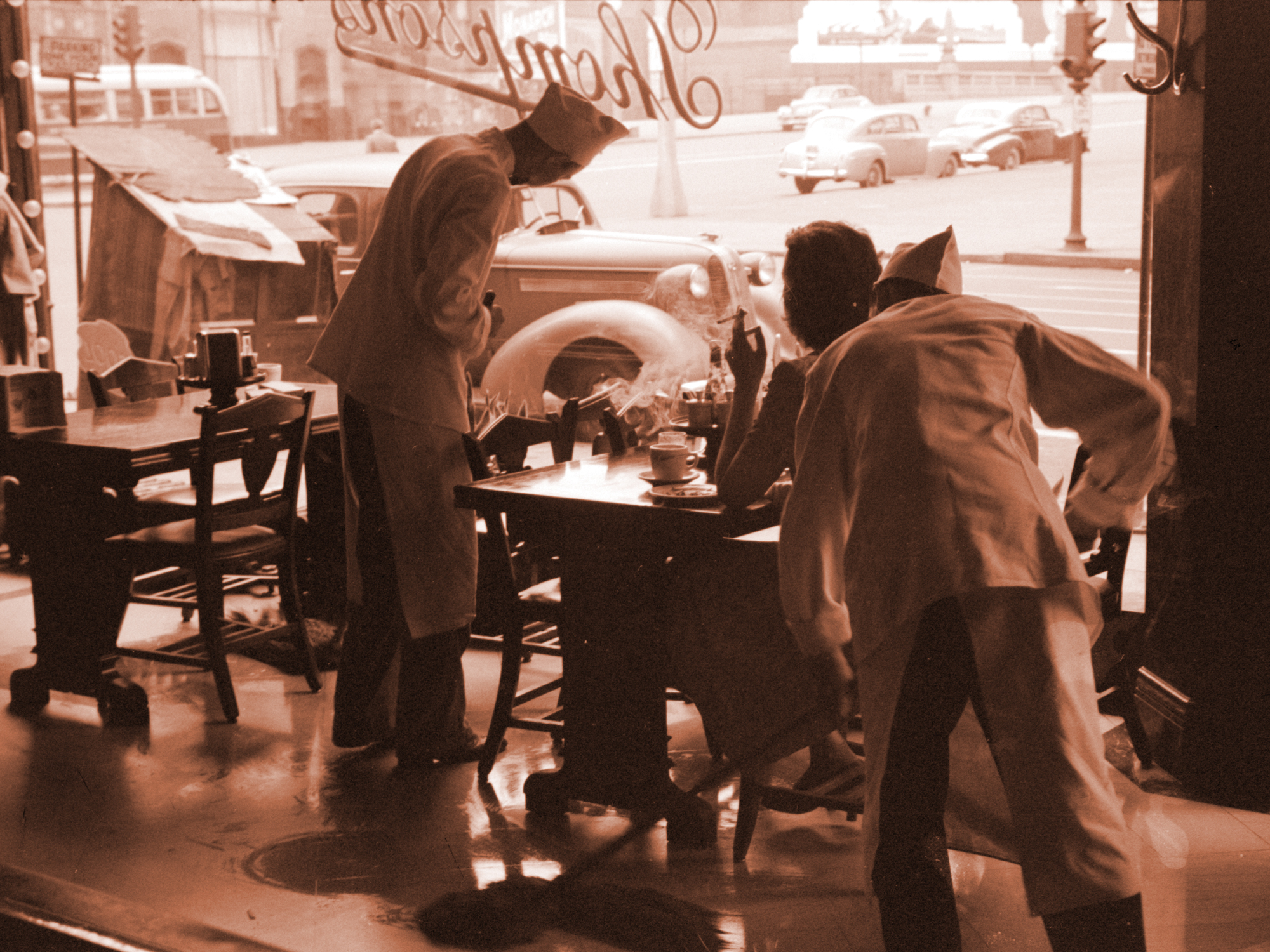ED. NOTE: A friend has pointed out a few address/phone errors in the Mexican section in early copies of the 2018 guide. Email me at [email protected] and I will send you a PDF of that section, corrected. Copies ordered now are correct.
IT WAS THE BEST OF RESTAURANT YEARS, it was the worst of restaurant years. We bid farewell to too many places we loved, yet we gained so many new things of promise. But how do you know which ones to check out? If only there were a book that, by the sheer act of listing places you should go try, also told you, in a sense, the story of dining in Chicago this year….

And so there is, again. The new 2018 edition of The Fooditor 99: Where To Eat and What To Eat There is now available, Fooditor editor-publisher Michael Gebert’s personal guide to the most exciting things to eat in Chicago right now, with specific recommendations of what to order at 99 restaurants. As Anthony Todd of Chicagoist (RIP) said last year:
Let’s be real for a second: most guidebooks suck, especially when it comes to restaurants. Either they’re not written for locals (and therefore contain lots of useless stuff you already know), they are wildly out of date because they are only slightly updated from year to year, or they pander to the lowest common restaurant denominator and insist that everyone run to Grand Lux Cafe. Thank goodness for The Fooditor 99, the new Chicago restaurant guidebook from food writer Michael Gebert.
It still fits in a glovebox (not to mention a stocking), and it’s very affordably priced at $6.99 for paperback (or $1.99 for Kindle), less than one mediocre appetizer that it saves you from. To learn more about the book, I interviewed myself:
Second edition, huh? Is there anything new in it?
More than I wanted there to be! About 35 of the 99 are entirely new restaurants being listed, but add in ones from last year where I rewrote the review substantially and it’s over half new content. And here and there I’ve also added new dishes to the recommendations even if the main text stays the same.
It is a 2018 edition, it’s about what has me excited on the food scene this year. Which again, is the most important criterion and why I don’t just automatically start by listing Alinea, Grace, and so on. It’s a highly personal list, which I like to think is a good thing—in a world of generic listicles constructed off of other peoples’ listicles, this is my list, what would I recommend if you asked me personally.
So remind us why the world needs this book.
I don’t know if the world does. The world has Michelin—carefully chosen, very conservative and reliable choices for someone who has a strictly limited number of meals in Chicago. There are some faintly risible things on the Bib Gourmands, but generally speaking, there’s no way to really go wrong with their list of starred restaurants. You will avoid disaster, for sure.
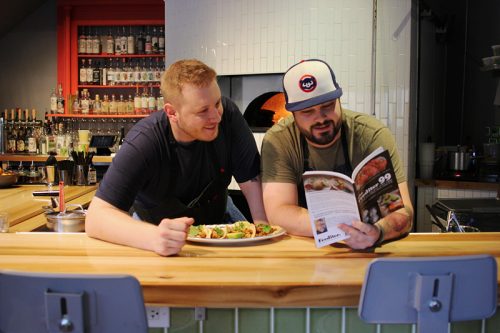
But you kind of won’t really have been to Chicago, either. My book is about enjoying this city in all its dimensions, about discovering what the neighborhoods have to offer. About experiencing the enormous cultural diversity of food out there on every level. Which if you live here, you absolutely should do—I mean, you put up with a lot living here, you might as well reap one of the key benefits, don’t you think?
Can’t we just do that ourselves, what do we need a book for?
James VanOsdol’s first comment when I was on Car Con Carne and we went to Khan BBQ on Devon was, if you’re not from the culture, how do you look at Devon Avenue and know where to go? How do you look at 30 Indian and Pakistani restaurants and go, that one, and these things? Same for Pilsen, or all the Thai restaurants in Lincoln Square, or Logan Square.
In a world of generic listicles constructed off of other peoples’ listicles, this is my list, what would I recommend if you asked me personally.
So I give you a couple of restaurants on Devon, and some specific dishes to try. That breaks the ice for the first visit, and then if you love it, next time you can branch out to other things. I think keeping it to 99 is a real benefit, and not just because it would never be finished if I didn’t. It’s curated, as the kids say. Every place in the book earned its place.
There were so many openings this year—do you feel like you kept up with them all?
So many openings, but you know, I’m not looking to list bro bars and a zillion poké places, so you can cut it down quickly to a more finite universe of culinarily interesting openings.
There are so many midlevel, pretty nice, American contemporary restaurants run by cooks who learned how to roast a chicken from Chris Pandel or Andrew Zimmerman or whoever in this city. We have those instead of corner diners now. Yet there are fewer and fewer serious restaurant reviewers, so I think I’m doing something important giving the better ones of those places a shot at broader attention.

How did you decide which restaurants to cut?
There were very few places that I cut because I no longer think they measured up. Obviously we had some closings, and there are some places I just haven’t been to in long enough that I didn’t feel confident that my review was still an accurate reflection of what the restaurant is like. Beyond that, I wanted to shake it up a little, especially in certain genres. So the pizza places are different pizza places, that kind of thing.
You included a bonus list of “pretty darn good” Mexican restaurants. Why?
Well, there are plenty of outstanding Mexican restaurants in the main list of 99. As many as anything else, more or less. But the two things people ask me for, consistently, are “Where’s good to eat right now?”—which is what the whole book answers—and “What’s a really good Mexican place?” By which they don’t mean Topolobampo or Quiote, but the place with the mama patting the tortillas as her housemade mole bubbles on the stove. It’s a thing Chicagoans take pride in, just like knowing a good old school pizza place.
I didn’t want to bloat the book with unnecessary features, but I thought about it long and hard, and finally decided that the list of pretty darn good Mexican fits the same mission as the rest of the book, something you can carry in your car or briefcase or whatever and put to good use when you need a suggestion of somewhere to go. And I don’t really know of any other list that’s focused on obscure neighborhood Mexican gems like this, but is still pretty concise.
Do you discern any big trends from putting this together this year’s guide?
Well, I don’t think it’s hugely surprising stuff. Asian food gets better and deeper throughout the city every year. Mexican gets more creative and diverse every year. Like I said, the neighborhood places that roast a beautiful chicken and make handmade pasta and so on—those are joys and they’re exactly who slips under the radar of Michelin and, mostly, reviewers (I still don’t think anybody has reviewed Royal Grocer & Co.)
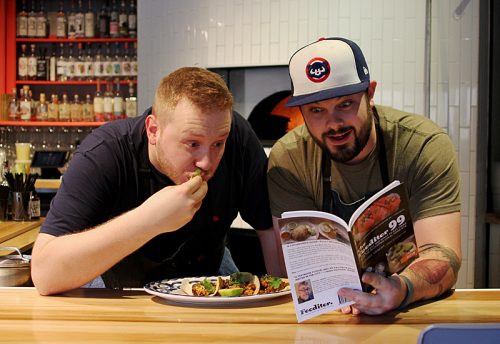
Special thanks to Dan Salls and Ross Henke at Quiote
How did publishing it yourself work out?
Really well. The advantage of timeliness—I basically locked the text and had books in hand within the week—is so strong for this kind of book. With traditional publishing, it takes at least half a year from the end of editing to get books in hand. This way it’s more like publishing a magazine, close on Tuesday and be in the street corner box by Friday. I’m sure some place in the book will close at year’s end and make it the Fooditor 98, but generally speaking, last year’s edition stayed pretty current till late summer, anyway. (Yes, Hanbun announced its closing date after I locked the text, but I warned in the text that it was going to close sometime in 2018. So it’s still 99!)
It’s hard to get self-published books into bookstores, because they don’t feel they’re “real” books and, well, they’re supporting their rival, Amazon. I can’t help that (but I will say to booksellers, I will make you really nice terms in return for it being out there in public). But so much of Fooditor is about exploring what I can do on a professional level by myself in this new era, so as experiments go, it’s been one of the more rewarding ones. I hope people who dine out based on what’s in the book feel the same way—that they experimented with it, and it paid off.
Make sure you get the new 2018 edition—follow these links:
Paperback • Kindle
I’ll be talking about my guidebook, other guidebooks going back to John Drury’s 1931 Dining in Chicagoland, and other stuff on December 9. Books for signing will be available for purchase (cash), or order one and bring it and I’ll sign it too.
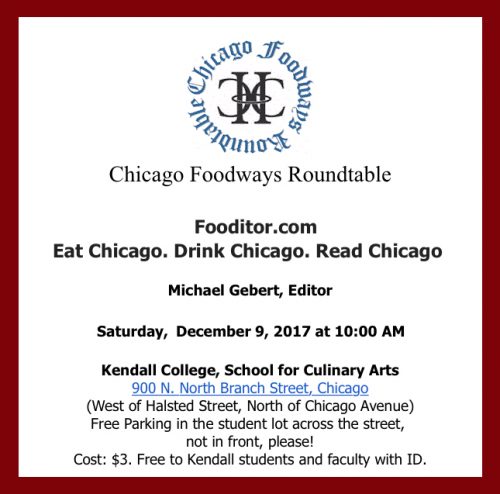
Michael Gebert is the editor of Fooditor and, by a remarkable coincidence, the author of The Fooditor 99.
Latest
Join the Discussion
After you comment, click Post. If you're not already logged in you will be asked to log in or register with Disqus.



